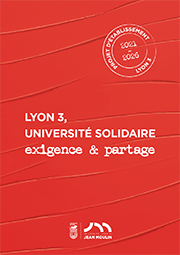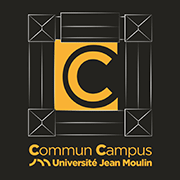Résultats de recherche
La recherche
portant sur गुगल Ranking and inclusion(TG:e10838).puc
a donné 2424 résultats
-
Universalis 2017. Guénin Hélène Rebecca François and Musée d'Art Moderne et d'Art Contemporain. À Propos Paris 2017 Dezeuze Anna. Terrain Vague Ben Vautier and the Ecole De Nice. Art History vol. 39 no. 4 2016 la BU de la Manufacture. Lancaster Rosemary. Art and Visual Culture on the French Riviera 1956-1971 The Ovadia Nice 2017. Biancheri Alain André Giordan and Séverine Giordan. L' École De Nice. Ovadia Nice 2007Page libre - 12/01/22
-
Espagne Universidad de Zaragoza - School of Economics and Business Rencontre le 15 Octobre 15h à 16h LocalisationPage libre - 05/10/21
-
journals Pressreader Factiva Russian Social Sciences and Humanities Periodicals UDB-EDU -Eastview Scopus TenkPage libre - 13/03/25
-
recherche en philosophie ancienne Modern Society and Democracy Séminaire Brouillon Séminaire de lecturePage libre - 15/04/25
-
Lyon 24 novembre 2021 Sacha LOEVE CRISPR-Cas9 GMO and genetic manipulations in humans Débat au CongrèsPage libre - 28/06/23
-
social norms on the constitution of personal identity and its implications in political theory 2019-2024 URPage libre - 17/02/25
-
Levallois-Perret Cedex 2024. Hong Seok K. Tae-yeon Lee and Jean-Claude d. Crescenzo. Sur La Route De BTS Essai Vanves Hauts-de-Seine 2023. Namin Jake Inès Pollosson and Magali Berthier. The Korean Dream Voyage Illustré Corée Du Sud. Hachette Vanves 2024. Prud'homme Manon and Ongda. Bienvenue En Corée Mon Voyage Au Pays De LaArticle - 23/05/25
-
subject over goods. Formally it is the right to enjoy and dispose of goods according to law. Materially it representation of the distinction between public and private law. This finally leads to suggest a legal right Public domain Public goods Heritage Public and private law Public law theory. Directeur de thèseArticle - 27/11/14
-
risks eroding the current evidentiary framework and appears to be in tension with the fundamental principles certainty. Though this imbalance between science and criminal evidence may attract criticism it warrants regulation of the use of science in the present and through the oversight of new scientific investigativeArticle - 12/06/25
-
of the institution showed signs of a public life and actively participated in the creation of a symbolic until then. In this way we believe that in the 70s and 80s Latin American context cinema transformed into context in the ways of cinematographic reception and to discern the mechanisms whereby the public gotArticle - 24/03/14






